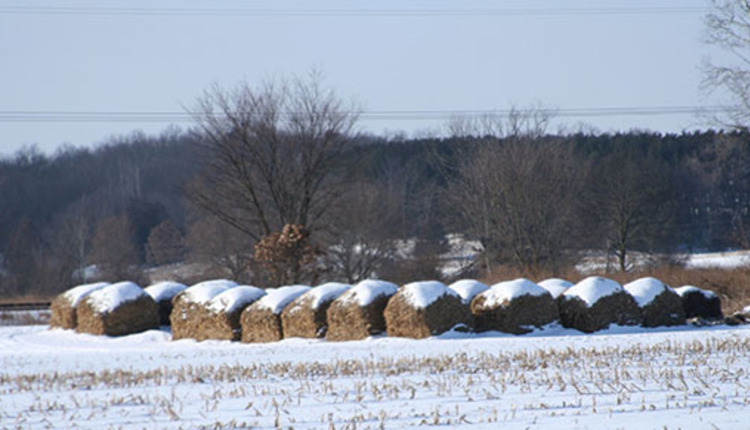
Gunn suggests that producers consider the following to help balance feed needs and maintain animal performance.
1. Get weights on cows as well as forage. Many producers tend to underestimate the weight of their cows and overestimate the weight of their bales. Having a correct cow weight will allow for the development of the most appropriate ration/supplementation scheme.
2. Remember that what is baled is not what the cows either have the opportunity to consume or will consume. Consider the current storage method and estimate the amount of storage loss as well as potential feeding losses that may occur.
3. Consider using cornstalks, either grazed or baled, to extend forage supplies. However, use caution when relying on stalks for winter forage. Hope for the best but expect the worst as a wet fall can result in poor quality stalks, poor grazing conditions and a baled product that has more value as bedding than feed.
4. Plan ahead. Hay prices are the lowest in a few years. If projected forage resources are short, consider buying hay now while prices are still depressed.
5. Test forages (all cuttings, all types). This is money well spent on any feeding program and likely the best return on investment for the entire enterprise. If overfeeding, you are wasting money. If underfeeding, you are losing money through loss of production.
6. Work with a multitude of outlets to identify economical protein or energy supplements available in the area. Then, work with your nutritionist or extension specialist to develop least-cost diets that meet the needs of your cows for all winter production stages. Only supplement protein when necessary; likewise with energy. Don’t buy or feed what isn’t needed.
7. Finally, add 30 days to your typical winter feeding timeline. Cool, wet springs have delayed pasture turnout the past two years. Turning cows out too early next spring because harvested feeds are gone is a potential recipe for pasture disaster.

